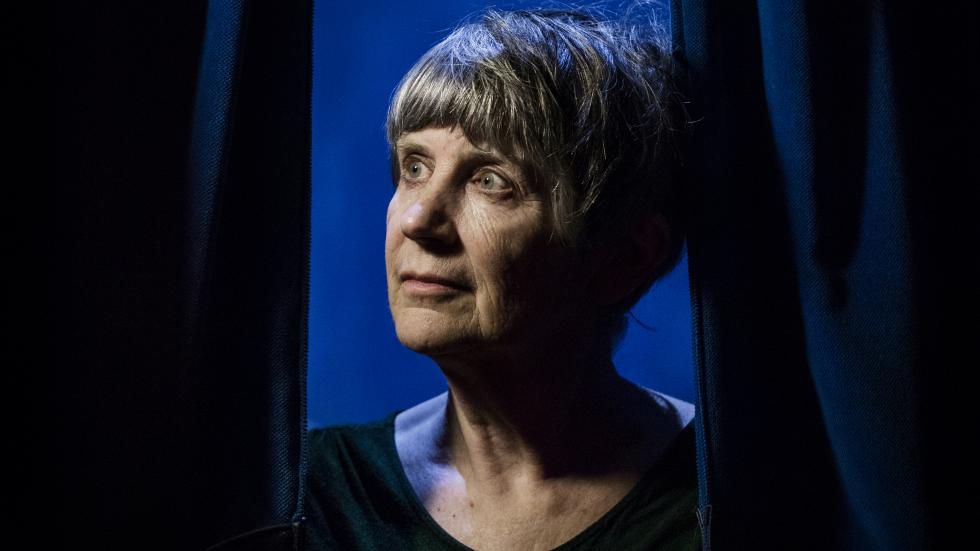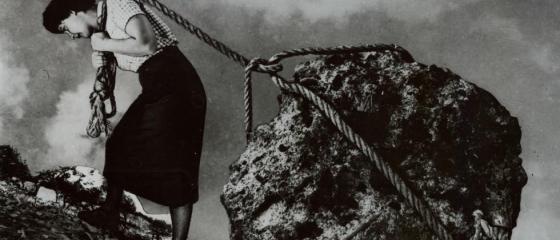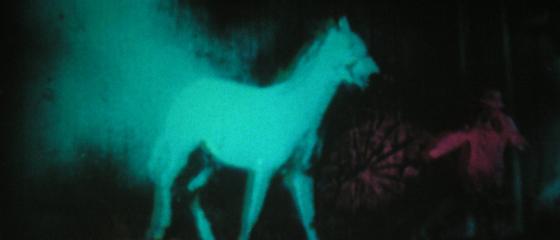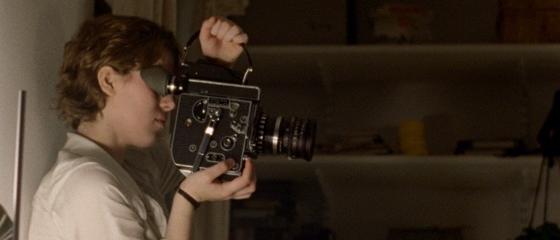VIVIENNE DICK. GUERRILLERE FILMS
The women say they have learned to rely on their own strength. They say they are aware of the force of their unity. They say, let those who call for a new language first learn violence. They say, let those who want to change the world first seize all the rifles. They say that they are starting from zero. They say that a new world is beginning.
Les Guérillères. Monique Wittig.
Let’s replace the rifles in the quote with cameras, and we’ll have a profile of Vivienne Dick.
Her films are those of a guerrilla warrior, free and combative, in her determination to re-appropriate the space of imagination, and to build a new world in which woman is the active subject. The fight for one’s own voice is vital in this new world/cinema, a fight that Dick has conquered with a particular way of doing, soaked in inventiveness, expressive force and militant spirit.
The first person is essential in a filmography that began in Super 8, a format that in its time was not only cheap and accessible, but also made it possible to have an intimacy with what was filmed, thus reducing the separation between filmmaker and subject. With an essence marked by punk spirit and D.I.Y., her films observe the surroundings at close hand but also try to reimagine them, without limiting the ways in which creativity emerges. That is why in her films there is a mixture, in which the dividing lines disappear, of pop iconography, performance, ironic psychodrama, humour, interviews, urban portrait, improvisation and at times even the forms of film-essay. Although her films can be linked formally with those of Warhol, Jack Smith, the early Ken Jacobs or the Kenneth Anger of Scorpio Rising, Dick’s is a cinema in which priority is given to a rare mixture of the visceral with self-knowledge and reflection. One that seeks to break the spell of the patriarchal paradigm. And that with the years has gradually evolved towards a more overall look, more placid but equally accurate, political without renouncing the feeling of play, walking towards an increasingly refined aesthetic. All that without losing one iota of her subversive, guerrilla energy.
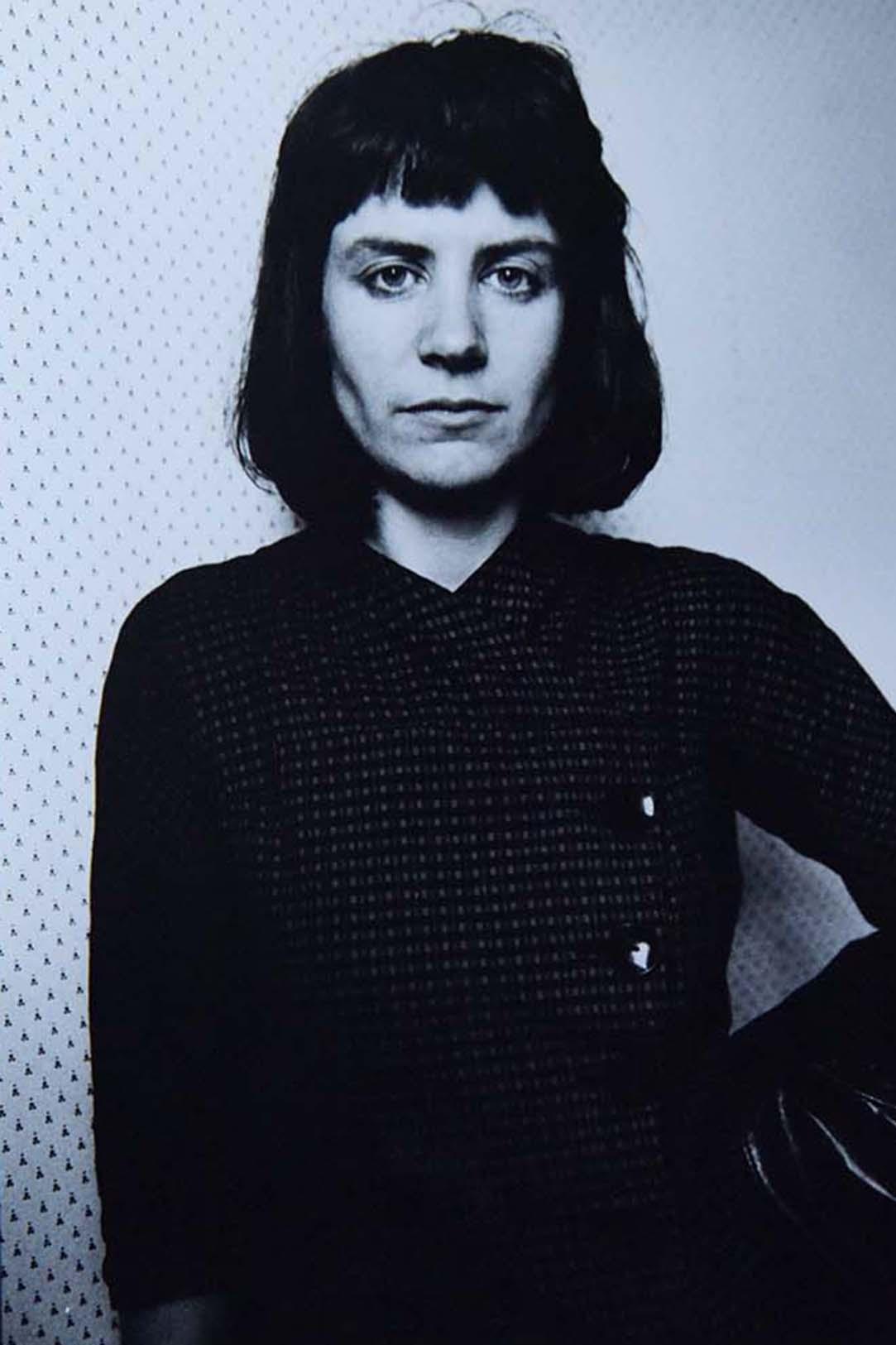
How did you start making films?
Before I went to America I worked on a ferry going from Germany to Sweden as a summer job. I saved the money from that and I bought myself a Pentax camera. And later when I was traveling around Denmark I met somebody who had a dark room. That was the very first time that I developed film. Later when I went to America , I met this guy was working with a high end commercial photographer. He taught me a more about photography. Then about a year later I was living in the Lower East Side and I found Millennium, which was a film workshop and they also had screenings. I joined that and that was when I began shooting S-8 film. I came home when my mother was very ill – this was about 1976, I filmed her and that was the first film I shot. In 1977 I met a group of people who were interested in making Super 8 films and were into the same music and milieu I was becoming part of – these included Scott and Beth B, Eric Mitchell, James Nares. I met them one evening on my birthday, and I was really excited because they were talking about making films and I felt “I want to do this as well”. That was the very beginning. I didn't have formal training in filmmaking. New York at that time was an incredibly creative space, there were people around me making music without really being able to play an instrument ‘properly’ . It was a very experimental period, not just in film, but in music, theatre, dance, photography. The other thing which was inspiring is that a lot of women were making work. it was really important to me that I was there, among these people, because it gave me permission, it gave me courage to make some work without worrying about whether it is good or not good or even asking too many questions about the direction I was going in. Super 8 was cheap, I had very small jobs and I could afford to buy some piece of film and had it developed. I had a very simple viewer editor set up at home and I used that for many years actually to make films, and some of the films were quite long, 50 minutes long,
How did you started making Guerrillere Talks?
When I started filming, I didn´t see it as being a film. There are no credits on it. It was something I wanted to do without really considering where it was going to go, or who was going to watch it. I didn't see myself as a filmmaker, I was just very excited about these people I was meeting that were to me extraordinary and represented a new kind of woman, and it was also was a way for me to get to know, for example Lydia Lunch. I had seen her perform in her band, Teenage Jesus and the Jerks but had never spoken to her. She was very open and a friendship started from there. I played with her in one of her bands (Beirut Slump). She was in a number of my other films after that.
The reels of this film are not edited. They are not edited, but in some of them there is in-camera editing. Initially I thought I would just run the camera for the three minutes. I was fascinated with real time and performance, with just being there in front of the camera. I had seen some work by Warhol, so I may have been influenced by his work.
After Guerrillere Talks, you made Staten Island.
A group of us women, were hanging out together- some were where involved in the music scene, another was a poet, we were all interested in politics and feminism. We had meeting where we discussed the possiblilty of making a film together. We were very interested in Monique Wittig and her book Les Guerrileres, which is a poetic and radical feminist text. Some of the film was shot but we never really completed it. The section I shot was Staten Island, which I made with Pat Place. She plays a strange androgynous creature, who lives in an old abandoned boat. . In the first shot in the film she is coming out of sea. The landscape is bleak and post apocalyptic in mood. She goes around picking up trash and plays with her toy dinosaur. There is a sense of connection to the past – through the dinosaur- and also to the future – a little bit sci fi. In the middle of the film we hear Jo Meek’s Telstar. To this I added other domestic sounds, like washing dishes.
There is a sense in this film of being an alien, does it have to do with you being an alien in New York, someone who doesn't belong there?
Possibly, but also the fact that women in general are alien (in our culture). It is the man who is subject, so the subjectivity of women isn't really defined, woman has to define what it might mean to be woman and not have it defined for them by men. It is great to call what it means to be a man or a woman into question. Also, she is alone, which is important.
The protagonist is Pat Place, did you think about the role and then you casted her, how was that?
The film is directly inspired by Pat, who looks so brilliant. She is also an amazing musician and artist. She played guitar with the Contortions – one of my favourite bands at the time, and later with Bush Tetras.
About Liberty's Booty, how did that project started? Did you know this group of prostitutes beforehand, did you go looking for them?
I had friends who were working in the sex industry at that time in New York, Some women I knew worked as go-go dancers or in the sex industry temporarily, and I had access that way. I began by getting to know them and recording them speaking obout their work etc which was mostly about sitting around and waiting for clients to turn up. These particular women worked out of their own apartments and were independent, they didn't have a pimp. I suggested they reenact some scenes from their daily lives.
What about the other women appearing in the film? Who are they, and how did you decided to put them together with the prostitutes?
In NYC at that time, in the late seventies, the city was falling apart, and a lot of people were unemployed. It was obvious that the sex and drug industries were huge. I suppose I was curious about the sex business. In Liberty’s Booty the distinction is somewhat blurred between who is or who is not a prostitute – and this is deliberate. In terms of a depiction of prostitution, It is a way of looking at the work from the inside, from the point of view of the sex worker. It is not particularly glamorous. People were exploited there in the sex industry just as they were in the low paid, no contract piece work friends of mine were doing to pay the rent and make ends meet. It has become commonplace today for people with a PhD to feel insecure and find it hard to find work. And the rents are higher.
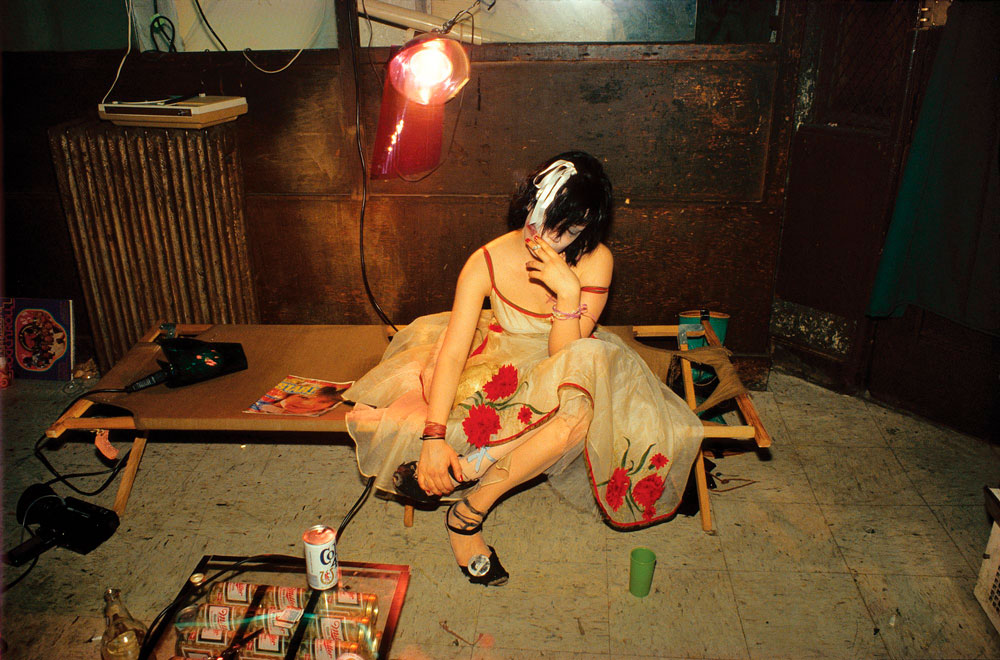
What about the pop references in the film? The 60s songs, all the little objects you filmed...
I grew up in a rural isolated part of Ireland. My access to the 60s was television, I was very attracted to music programmes like Ready Steady Go and Top of the Pops etc. which I would watch religiously at home on TV. This was London and the ‘swinging sixties’ and I wished desperately to be there! But I was living in a small village and going to a strict boarding school most of the year. I listened to the new music on Radio Caroline and Radio Luxembourg secretly under my pillow at night. When I moved to New York I found myself in a whole new and exciting music scene. Not only that, but we dressed in the recycled clothes of the 60’s and a lot of the music from that time was being played again, either the original or a new version. I was living my dream! We would find records and vintage clothes in thrift stores and in skips. Vicky, in Liberty’s Booty, really took it to an extreme She is the one near the beginning of the film in the empty apartment talking about a giant eyelash curler. She was completely immersed in the 60s and had collected all the old records and other paraphenalia. It is sort of a performance, but it is also about creating a world around you in opposition to the bland old world of everyday life. At that time in New York, because of the recession, rents were affordable and people had time to spare doing other creative things. Nobody had any money but there was such a lot going on and we went to openings and clubs and made things. There was a lot of crossover – filmmakers in bands, dancers making films. Everything was done cheaply. We organized our own publicity and venues.
So you went back on a vacation to Ireland and you did Visibility: Moderate. This is a sort of crazy travelogue through Ireland, I think it's very interesting your view as an insider but an outsider at the same time, you were maybe looking your country with different eyes?
Yes, I am playing with the ways Ireland had been represented in images – by the tourist board, by films and in postcards, especially those by John Hinde whose pictures always had a woman wearing red in front of a waterfall or a castle. I mixed documentary footage of the poverty and the urban living, with the images of this imaginary Ireland where a ‘fake’ tourist arrives in Ireland expecting to see the Ireland of the tourist brochures but she is gradually introduced to a ‘real’ Ireland, but not before being attacked with potatoes by a crowd of angry stage irish actors in a fake in a ‘irish cottage’. The documentary parts record things that were going on at the time – a collage of radio extracts, hunger strike marches, a woman just released from Armagh prison talks about conditions there..

You also use some TV advertisings.
The ads look old fashioned now and did then too. Our reality is mediated by ads as much as anything else – tv shows, theatre, postcards etc.
There is also the performance of this woman running through this kind of Stonenhenge rocks, like an ideal in contrast with some kind of reality, that adds some kind of ridiculous tone to all of that.
Ireland is rich in archeological remains that go back to prehistoric times. For years the farmers left them alone because they that respect for them and were perhaps superstitious. It is fascinating to me that these traces from a very long time ago are there and how little we know about that time. We do know that the early Neolithic people looked towards space - they knew the stars and In the Celtic world God was female. That alone is such a change from our culture today. I find it interesting how beliefs and attitudes change over time. Today, there is a lot of nihilism and despair about where we are going and about the future of our planet. Our dreaming and our imagination are so important. Perhaps those scenes are about that – and also perhaps poking fun at fantasies we hold about the past. We need to be able to imagine a future that works for us men and women – the planet is shrinking. We do not have to accept a scenario that results in the destruction and annihilation of everything.

You also filmed Like Dawn to Dust on a vacation with Lydia Lunch. How was the work with her for making this film? This is one of your most lyrical films.
I often return to landscape and often it is contrasted with urban footage that is gritty or has a feeling of decay. Like Dawn to Dust was shot in the West of Ireland, in Connamara, where the land is rocky and wild. Lydia came to Ireland with Nick Zedd, and we decided to make this film. The lines in Like Dawn to Dust are Lydia's own words, as is the music – some of which was made with Nick Cave.
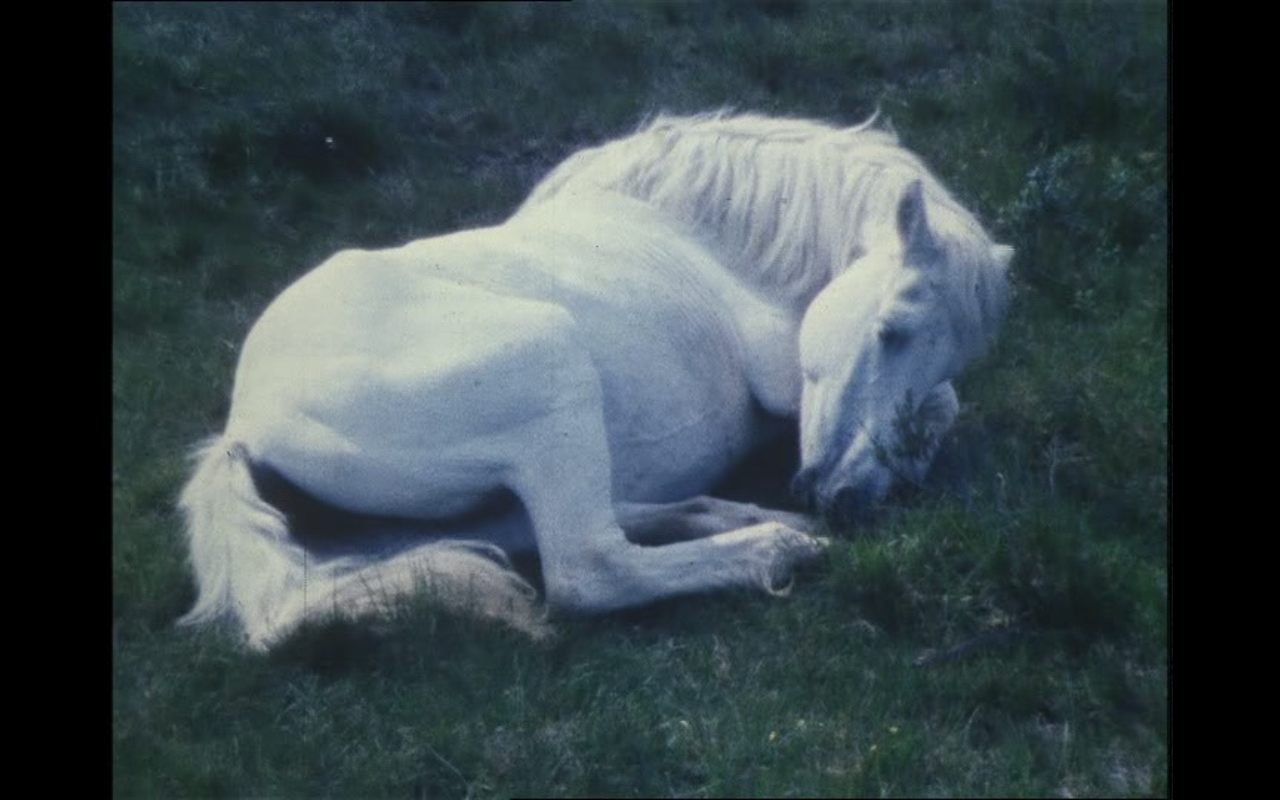
The landscape is also very present in your film Rothach.
Rothach is an Irish word that means cyclical.
For me this film is a change, because up to that point your films were focused in people, and now the protagonist is the landscape, in a film with a sort of structural construction.
Yes, it's made of big sweeping pans, interspersed with still shots. I was five months pregnant when I made that film, That was the first film I made that was funded - in this case by, the Arts Council in England, as I had only just moved to London to live. It was shot in 16mm, and this perhaps affects the structure of the film, it is more locked down and I am using a tripod. The words in the film are from an Irish poem called “An Roithlean”, which means something that turns – like a wheel. It speaks about the state between sleeping and being awake. The poet is dreaming of flying amongst the stars, and gripped suddenly by the thought that he will not be able to return, but he hears footsteps and domestic sounds, which draw him back to earth. I am interested in time, and different realities and imaginary spaces. It is important to fight the colonization of our imaginations by tv, google, facebook etc. Nietzche understood this way back in the 19th century and later Deleuze. And, of course, Artaud.
London Suite is a film about a group of people living in London, can you tell me a bit about how did you make this film?
The film was commissioned by Channel 4 and the Arts Council, a Production Award. It describes the world I was living in at the time in a London. In this sense it is a document of those times. We were living in squats, scavenging fruit and vegetables from skips in Covent Garden Market. Few of us had a job. We were supported by the state. The café in the film was a cooperative. That world is gone now. The squats have disappeared. People work hard to pay a high rent and it has become very difficult for artists to survive.
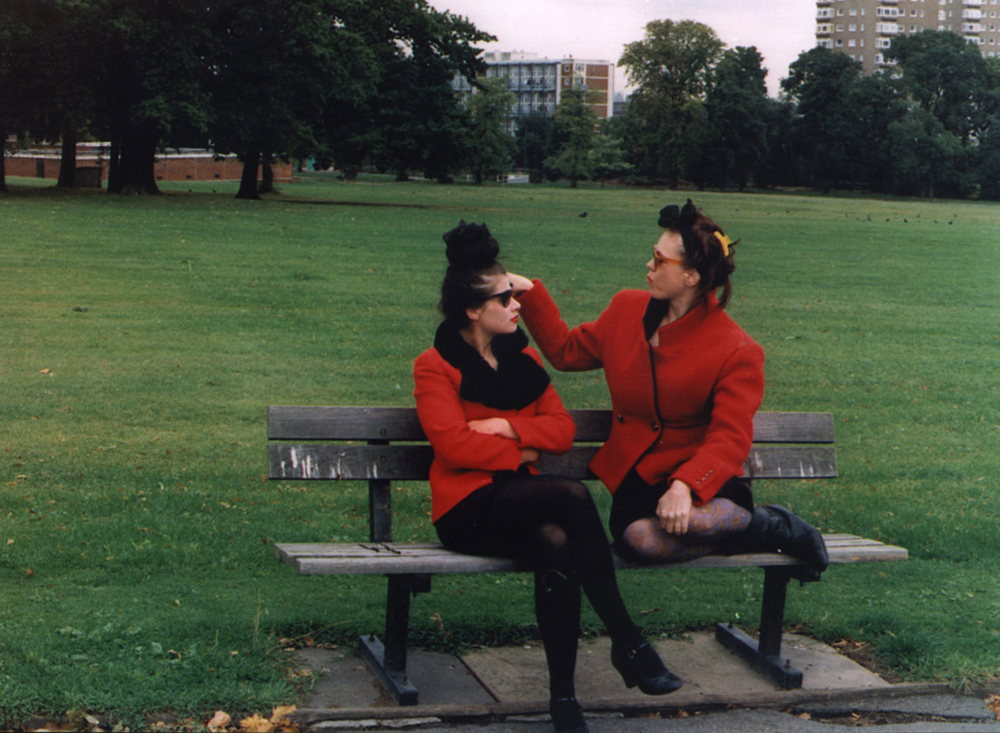
And when you started to make this work, were you thinking about mixing performances with documentary and so on? Or was it something that came with the process afterward?
I have always liked to mix performance with documentary and fiction. Making a film for me is like creating a song or a piece of music. I pay a lot of attention to editing and to rhythm and pace. There is looseness in the structure and direction can switch very suddenly. But in the end it is very tightly constructed. I pay attention to each frame. I never like the audience to know what is coming next. Yet I like to keep the audience with me on the journey. I try to make the film work at different levels and at the same time, keep an openness there for the imagination. The starting point might be a location, or some music, or a face. I do not use a script as such. I might have written some text and some visual ideas, but the development is always devised with the performers. I love classic narrative film but it is not my thing. You have to make what feels right for you.
Can you tell me a bit about Two Pigeons?
Two Pigeons is a short film a made with two friends one Summer’s day in London. In the film, there are two there are two contrasting locations – one in central London, in Regents Park – all very proper, orderly and English, and the other in East London, in Canning town with half demolished warehouses – a post industrial landscape used by many filmmakers over the years as a location – including Jarman, and Kubrick. You can see traces of Full Metal Jacket there with Vietnamese names on buildings. Some of the buildings were half blown up and left standing at a strange angle. it was a superb place, to film in. The film was commissioned by Steve Nieve (from Elvis Costello’s band) he wanted to play a live soundtrack to it. I then made another soundtrack with music by Martin Denny and a song sung by Lol Cockhill It is a quirky film – a play on gender and also contrasting the sedate (or the rational) with the chaos of the unconscious. It is also an homage to Jack Smith. I worked with him for a while in New York as his photographer.
The next film we are going to screen, A Skinny Little Man Attacked Daddy, for me it's a very brave film in a sense, it's also as a self-psychoanalysis. Can you tell me something about how did you decided to deal with this with film?
I began by wanting to make a documentary for television about Donegal, which is in the North West of Ireland, and is where I grew up. I shot some footage with development money but it really was not working for me. I changed direction and decided to make something more personal about my connection to this place. Obviously this is a singular view of the past. When you come from a family of seven you know well everyone has different memories. I filmed members of the family coming together during the holidays period, with their young children – the next generation – who remind me so much of my own childhood. There is a sense of the cycle of life: a member of the family dies, and there is a birth -here represented by the birth of a calf ( my brother is a vet) It's very visceral because the experience of growing up in this place is rooted in the land and the rocks, the weather, the wind and the rain. I wanted that to come across in the film, the physicality of the place.

And it is also about how your parents affected your own way of being. You say at some point of the film that you inherited the fears of your mother, that was very intense for me. Was the film in a sense therapeutic for you?
Yes, the making of this film was certainly cathartic. I am part of my mother, my mother is in me. My father as well, but I was more connected to my mother. It comes from the sadness or the difficulty in communicating with my mother. The emotional language is not there, is not developed. The mother-daughter relationship tends to be suppressed in our culture. It is a complicated relationship as the ‘subject’ (in psychoanalysis) is male. We are more used to celebrating the mother /son relationship.
We are also showing some recent work, like The Irreducible Difference of the Other, can you tell me more about this film and what did you want to convey with it, the selection of the texts and the performers?
The title comes from Luce Irigaray, I've been a great fan of her writing for a long time. Irigaray is a Belgian philosopher and cultural theorist. She speaks about how relationship between the sexes is impossible if woman is not recognized as a full subject. The history of relationship in culture has mostly been about dominating the other. The Irreducible Difference of the Other is about the importance of maintaining the gap between two equal subjects. It is about reciprocity and not sameness. The film is structured as a collage – quite sudden cuts to one reality to the next. There are references to anti Iraq war demonstations in various countries, as well as footage from Egypt related to the Arab Spring, and Occupy footage from Galway, Ireland. In it Olwen Fouéré plays Artaud who came to Ireland in 1937. He visited the West and spent some time on one of the Aran islands. She also plays a female character, a cipher for woman really, but, who, at one point could be Anna Akhmatova. The film is suggesting that there is a serious imbalance in our culture as it prioritizes masculine values and devalues others. Think of strength and vulnerability. Relationship between peoples and states is based on domination and power and not cooperation and reciprocity. If we had governments and laws that were more balanced, we might have fewer wars and more hospitals, care for the aged and child care.

There is also a political sense in the joy of a film like Red Moon Rising, I think. Can you tell me a bit about this film and the performers in it?
That film is a continuation of the previous film, The Irreducible Difference of the Other. The last film I made is called Red Moon Rising. Part of the film is shot in many different parts of the country and the rest in a wood at dusk with various live art performers. Making it involved going out into the landscape in all weathers to find the right light or the right moment. Sometimes in the fog and with the reflections in the water, the landscape becomes quite abstract. The sequences in the wood were shot over a week with a crew and lit with coloured gels to create an imaginary space. The development is very loose but the feeling of being lost is a very important side of making art. Working with the performers – there is of course direction from me but they bring their own energy- to the film. For example, the shamanistic ritual ( Lisa Marie Johnson) becomes more than a performance.
The performers were a really amazing bunch of people, something kind of magical happened with this film. You have the sense of this pure landscape, and a beautiful light. It has to do with a space of imagination. Although it is not sad, it has to do with the earth, we are destroying the earth but the earth is so beautiful. We, men and women, are part of the earth as well, we are embodied in the earth.
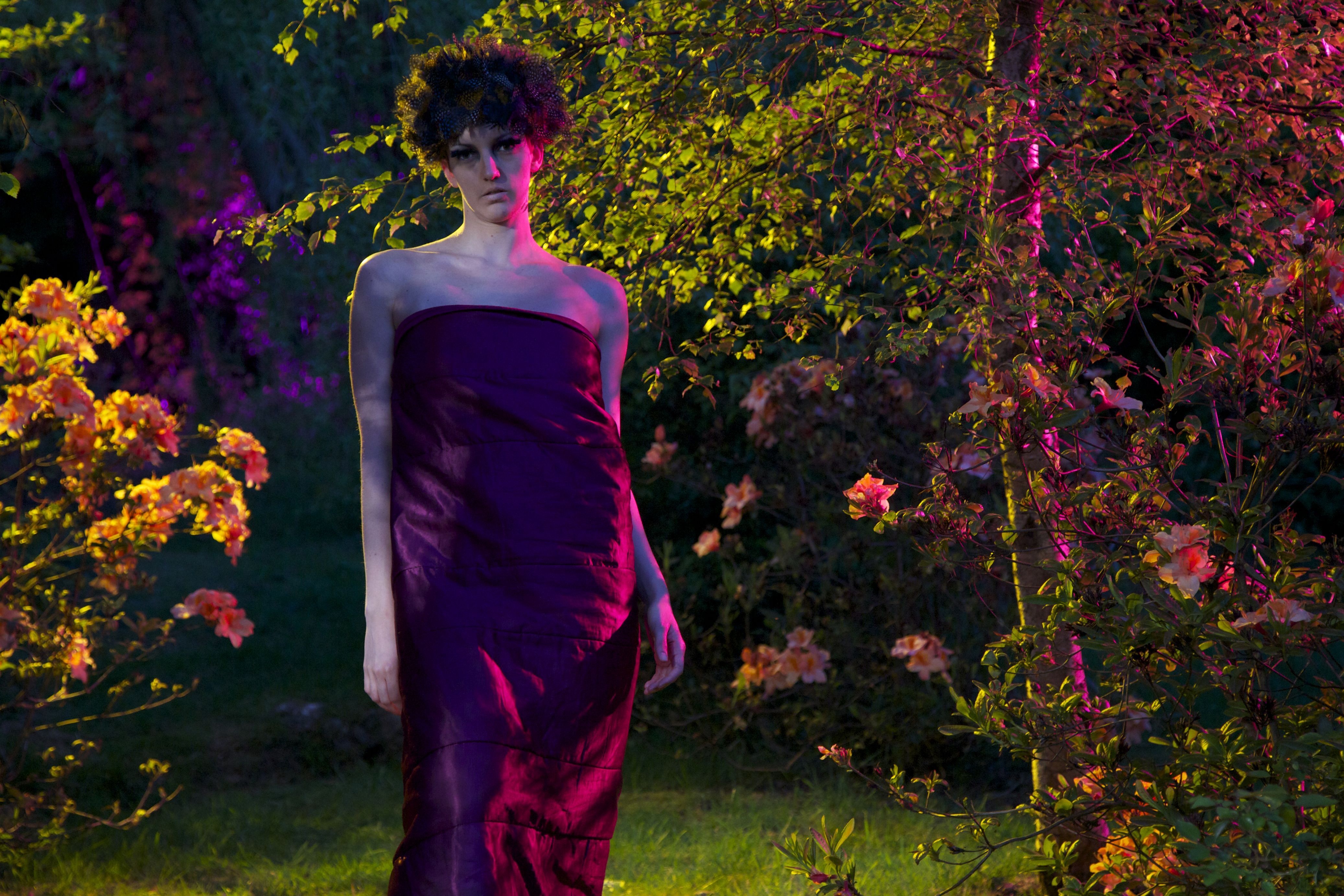
In a film like Felis Catus you are also addressing how the human being is going in a direction which is very destructive.
This film that was a commission from the London Short Film Festival. I was asked to make a film about a cat. It is made from the perspective of a cat. Humans are the most destructive creatures on earth. This is not something we think about very often. 40% of the creatures of the earth have become extinct in just a few decades.
We have been talking about this during the interview, but can we go deeper in what performance means to you, how you view performance?
Probably it all started with music performance. In the early days in New York I saw a lot of interesting performance in theater and music, people like Meredith Monk, and I was fascinated with the plays of Robert Wilson in the early days, he was working in New York at the time. Also meeting Jack Smith and seeing him work was extraordinary. The world he created was so different of everything I have seen before. All these people I was fascinated with at the time were creating their own imagery, their own music and their own sound. Everyone needs to find their voice, I am trying to do that with my work. As for performance, in the recent years in Ireland I've been very involved with seeing performances and live art. I was running this space in Galway with this friend of mine which is a performance artist, where we had a lot of different sorts of things happening, like screenings, sound art, performance art, live music... It ran for 3 or 4 years, and I met a lot of young artists there. Some of the people I met there are in Red Moon Rising. It's important to meet with young artists and see what they are doing.
Interview by Elena Duque for the Seville Festival 2016 catalogue.



